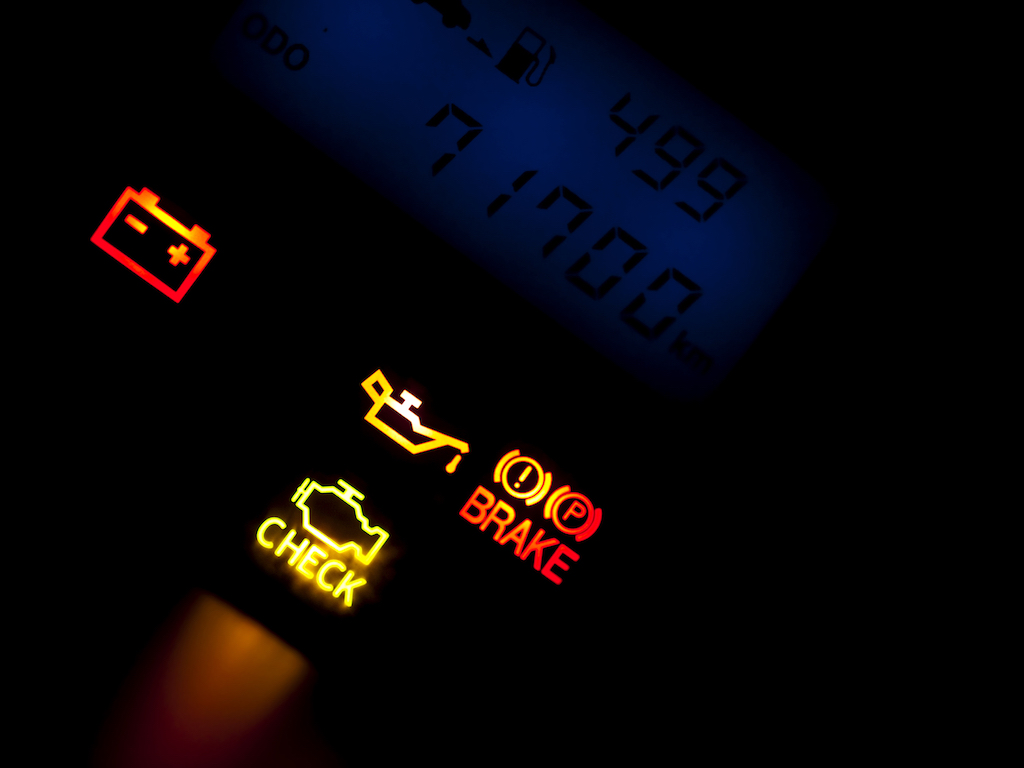Check engine lights are very common. In fact, check engine diagnostics are one of the most commonly requested services on Openbay. Here’s what the check engine light means, and what you should do about it.
Why Is My Check Engine Light On?
Simple answer: your car’s engine is confused. Specifically, the computer is getting data from a sensor that’s not making any sense. The check engine light comes on to tell you to get it fixed.
Your car (unless you’re driving a classic or antique, of course) uses a very sophisticated computer system to manage the engine. This computer uses dozens of sensors around the engine compartment to supply information necessary for the computer to keep the engine operating at peak fuel efficiency and low pollution. Sensors monitor things like temperatures, the amount of air flowing into the engine, the position of the crankshaft and pistons as the engine rotates, and literally dozens of other things. This data is digested continually, and is used to control the amount of fuel injected into the cylinders, the timing of when the spark plugs ignite it, and even when the camshaft opens the valves.
When the data from one of these sensors gets outside a narrowly-defined range of acceptable values, several things happen inside the computer’s software. In order to let you continue driving the vehicle, the computer will substitute a default value, one that’s close enough to get you home from the grocery store and then to the repair shop. Then it sets what’s referred to as a trouble code in its internal memory. There are literally hundreds of these codes, most of them quite specific. The computer will then turn on your check engine light on the dash, letting you know it’s found an issue.
Fun (& Important!) Fact
The #1 most common reason why your check engine light is easy to fix! Try tightening your gas cap before going in for service. If it’s not screwed on all the way, it will trigger a check engine light.
How is a Check Engine Light Diagnosed?
The car repair shop can then plug a scan tool into the diagnostic port under the dash and download the trouble codes, giving the technician a starting point for his diagnosis. He can then use the scan tool to erase the codes and turn off the light.
There’s danger in relying on trouble codes for diagnosis: just because your computer returns a trouble code for a poorly-operating MAF (Manifold Air Flow), doesn’t necessarily mean there’s a problem with the sensor. The issue could simply be a loose hose or leaky ducting between the MAD sensor and the throttle. That’s important because the MAF sensor could cost hundreds of dollars. Tightening a leak takes only a minute and shouldn’t cost more than the shop’s minimum charge for diagnostics.
There are plenty of other sensor-related trouble codes that could well be caused by something other than a bad sensor.
If My Car is Running OK With the Light On, Can I Ignore It?
No!
First off, even though it seems fine, your car enters a different regime when that light is on. It no longer self-tunes itself for the best economy, power and emissions like it’s supposed to. Although it may be unnoticeable, you’re getting fewer miles per gallon as well as a reduced ability to accelerate up a freeway ramp or complete a passing maneuver. You owe it to your car and yourself to get it checked.
Don’t have a go-to mechanic? Use Openbay to compare quotes for check engine light diagnosis from top repair shops in your neighborhood.
Save upwards of 25% on
car repair and maintenance services with Openbay+

